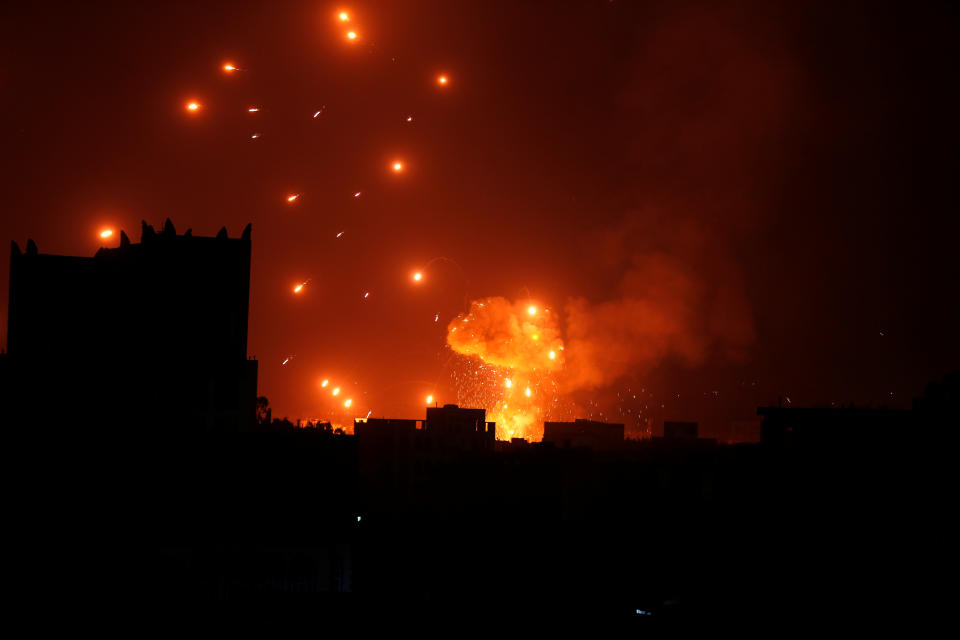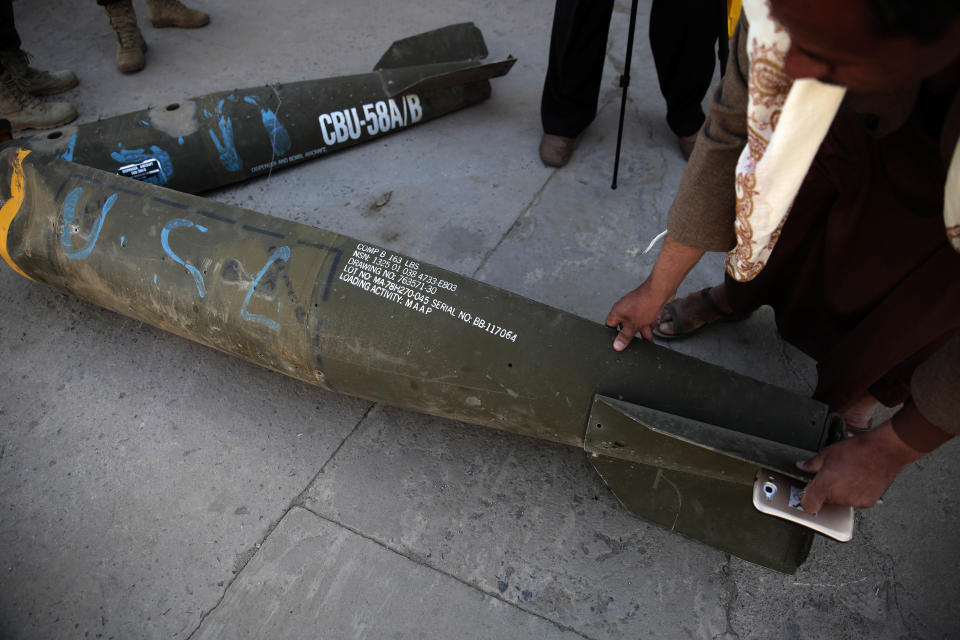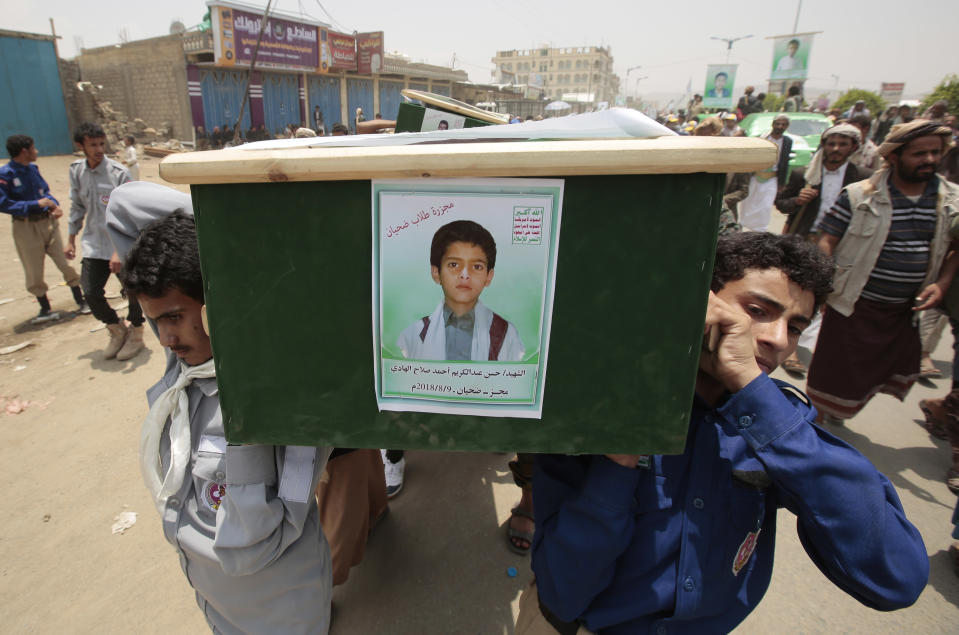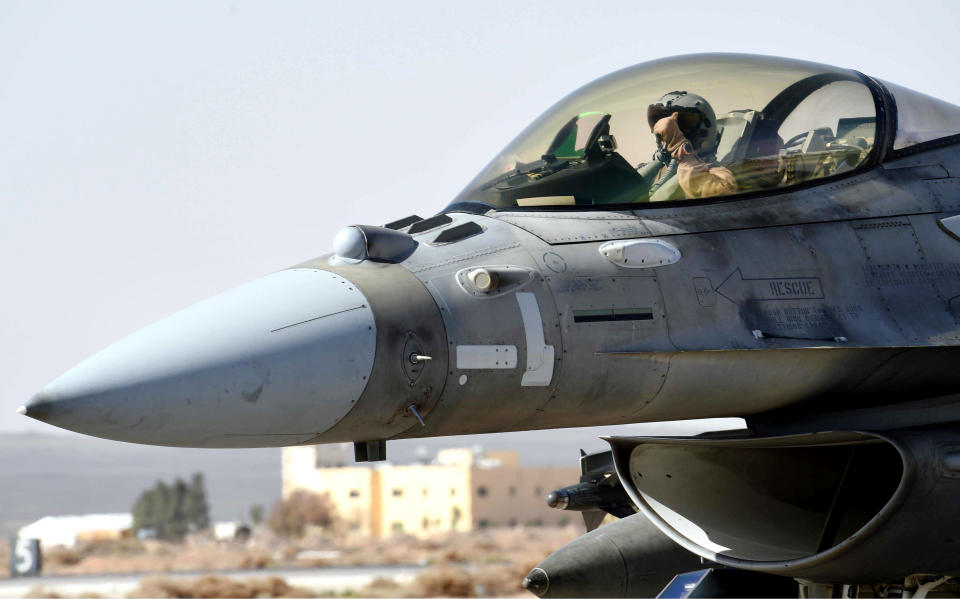Despite denials, documents reveal U.S. training UAE forces for combat in Yemen
When the Pentagon announced last November that it was ceasing aerial refueling of Saudi-led coalition aircraft operating in Yemen, the move appeared to be a major step back from U.S. support for the war there. But newly obtained documents reveal that the United States has also been training coalition military personnel from the United Arab Emirates for the air war in Yemen.
The documents underscore the continuing frustrations for critics of the war, including those in Congress, over the lack of transparency around U.S. military support for a war that has killed thousands of civilians and pushed the country to the brink of famine.

The United States is “not a participant in the civil war in Yemen nor are we supporting one side or the other,” Gen. Joseph F. Dunford Jr., chairman of the Joint Chiefs of Staff said last month, echoing a long-held position in the Pentagon.
But official Air Force documents obtained by Yahoo News show that the U.S. military has been even more deeply involved in that war than previously indicated. Despite unambiguous claims by the U.S. military to the contrary, the United States has trained members of the Saudi-led coalition, specifically, according to the files, “for combat operations in Yemen.”
The files, obtained from Air Forces Central Command via the Freedom of Information Act, appear to tell a different story. “Escorted 6 UAE F-16s to RED FLAG” — reads a December 2017 Air Force document referring to an advanced aerial combat training exercise held for U.S. and allied pilots — “assisted 150 airmen in challenging ex[ercise] to prepare for combat ops in Yemen.” The document goes on to detail additional support provided by the U.S. Air Force’s Air Warfare Center at Al Dhafra Air Base in the United Arab Emirates. “Unit fighter personnel advanced the UAE’s F-16 fighter pilot training program; 3 pilots flew 243 instructor sorties/323 hrs that created 4 new instructors & 29 combat wingmen who immediately deployed for combat operations in Yemen.”

The training is, in essence, an essential part of the war effort, according to William Hartung, the director of the Arms and Security Project at the Center? ?for? ?International? ?Policy. “Training pilots who go on to bomb civilian targets in Yemen is yet another U.S. form of complicity in a brutal war that has gone on for far too long,” says Hartung. “If the Trump administration is serious about getting Saudi Arabia and the UAE to negotiate in good faith for peace in Yemen, they should cut off training and other forms of military support until they play their part in ending the war.”
Despite those documents, the Pentagon continues to insist that the training is not part of the Yemen war.
The United States has not, said Lt. Col. Earl Brown, a Central Command spokesperson, “conducted exercises with members of the [Saudi-led coalition] to prepare for combat operations in Yemen.” When asked for clarification, Lt. Col. Josh Jacques, also from CENTCOM, repeated the denial. “As we said before in our statement, we do not conduct exercises with members of the [Saudi-led coalition] to prepare for combat operations in Yemen,” he told Yahoo News.
Brown and CENTCOM’s media arm, known as the Communication Integration Directorate, did not address the discrepancy when asked to comment specifically on the Air Force documents, which appear to contradict this claim. “We remain committed to providing the Saudi armed forces with the equipment, training, and follow-on support necessary to protect Saudi Arabia, and the region, from the destabilizing effects of terrorism and other threats,” the directorate wrote in response, describing the Pentagon’s assistance as “limited non-combat support.”
The UAE’s Ministry of Defense did not respond to multiple requests comment.
Since 2015, the United States has backed the Saudi- and UAE-led coalition’s war against the Houthis providing weaponry, logistical assistance — including air-to-air refueling — intelligence sharing and advisory support. It also provides support to the war through a classified operation called “Yukon Journey.”
A report by the United Nations Group of Regional and International Eminent Experts on Yemen determined that at least 16,706 civilians have been killed or wounded as of August 2018, although it noted that “the real figures are likely to be significantly higher.” Saudi-led coalition air strikes, which have hit residential areas, “have caused most of the documented civilian casualties,” according to the report.
“We are thoroughly aligned with the Saudi and Emerati actions in Yemen — both the war against the Houthis and the counterterrorism campaign [against ISIS and al-Qaeda in the Arabian Peninsula] — and it’s really important that we not only make claims about expecting our partners to abide by high standards of conduct, but also that we can prove that they are doing so,” says Luke Hartig, formerly the senior director for counterterrorism at the National Security Council and now a fellow in New America’s International Security program.

While U.S. support for Saudi Arabia has garnered headlines, U.S. assistance to the UAE has received far less press coverage. Since 2009, however, the United States has made offers of close to $30 billion worth of weaponry to the UAE under the Pentagon’s Foreign Military Sales, including about $7.2 billion in bombs and missiles.
“The UAE’s role is often overlooked, but they, and the militias they train, arm and finance, have been implicated in widespread human rights abuses, including torture,” the Center? ?for? ?International? ?Policy’s Hartung told Yahoo News. “The UAE is a least as responsible as Saudi Arabia for the slaughter in Yemen, but it has not been held responsible for its actions in any significant way.”
Between 2000 and 2013, the UAE purchased 110 F-16 combat aircraft, including 30 with standoff air-to-ground munitions. Late last year, Lockheed Martin and the UAE agreed on a $1.6 billion upgrade to its original 80 F-16s. “All partner-nation pilots flying aircraft purchased from the U.S. receive their training in the U.S.,” Brown, the CENTCOM spokesperson, told Yahoo News.
Not all training, however, occurs in the United States. American personnel at the Air Warfare Center at Al Dhafra Air Base provided significant assistance to forces in the UAE, according to the documents Yahoo News obtained, and was even recognized for efforts that took place during 2016 and 2017.
Last November, Saudi Arabia and the United States agreed to end U.S. refueling of aircraft from the Saudi- and UAE-led coalition. The change from U.S. to coalition capabilities, however, was not seen as significant, since only one-fifth of coalition aircraft reportedly required in-air refueling from the United States. Nor did this decision affect broader U.S. assistance, specifically the training of pilots.

A bipartisan effort to limit U.S. involvement in the Yemen war passed the Senate last year, but failed to pass in the House. With Democrats now in control of the House, a new piece of legislation designed to end U.S. support for the war in Yemen is expected in coming weeks.
“The end of U.S. refueling is an important step, but it is woefully inadequate if the goal is to stop Saudi bombing of civilian targets. It should be supplemented by an end to the sale of bombs and other weapons used in the conflict; a stop to training of Saudi and UAE forces; and a cut-off of spare parts and maintenance for U.S.-supplied weapons being used to prosecute the war,” said the Center for International Policy’s William Hartung.
Nick Turse reports on national security and foreign policy. He is the author, most recently, of “Next Time They’ll Come to Count the Dead: War and Survival in South Sudan.” He has written for the New York Times, the Los Angeles Times, the San Francisco Chronicle, the Intercept and the Nation, among other publications.
_____
Read more from Yahoo News:

